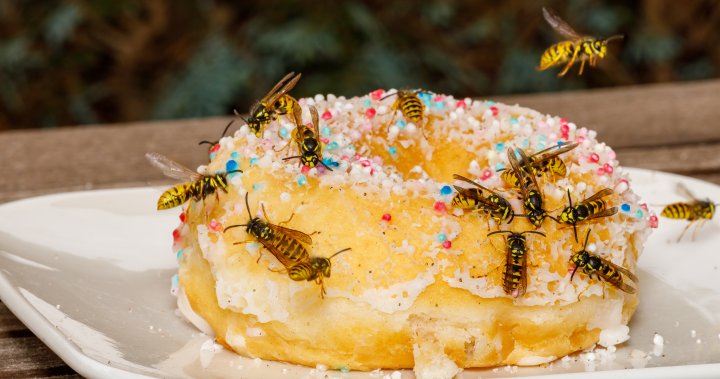As summer comes to an end in Canada, wasps become a prevalent nuisance at outdoor gatherings. The increased wasp activity during this time is due to the late summer and early fall season, when their colony dynamics change significantly. Yellow jackets, the most common type of wasp seen buzzing around food, are responsible for stinging thousands of people each year. While wasps can be beneficial by controlling pest populations and acting as pollinators, their aggressive behavior in late summer can lead to stings and allergic reactions. It is important to seek medical attention if a wasp sting causes unusual symptoms such as swelling, itching, dizziness, or shortness of breath.
Wasps become more aggressive in late summer and early fall because they are focused on providing food for their developing larvae. Worker wasps catch insects like flies and caterpillars and bring them back to the nest to feed the larvae. The exchange of food between the larvae and worker wasps results in the release of a sweet substance called larval secretion, which motivates the workers to continue hunting for food. However, when the queens stop producing larvae at the end of the season, the workers are left without a job and a food source, leading them to become more aggressive towards humans.
This year, there has been a significant increase in wasp activity across Canada, including in provinces like Ontario and the Prairie provinces. The warm weather and ample food sources, such as aphids, have created ideal conditions for wasps to thrive. The mild winters experienced in some Canadian provinces have also contributed to the increase in the wasp population. Experts advise exercising caution when dealing with wasp nests, especially hidden nests in cracks or crevices on lawns. Attempting to remove a nest without professional assistance can lead to dangerous situations.
One way to prevent getting stung by wasps during outdoor gatherings is to use a fan, as wasps dislike them. Wasp traps are also effective in reducing the number of wasps in the area. Placing the traps at the edge of the deck or fence line can help prevent wasps from approaching where people are gathered. It is important to be cautious when attempting to remove a wasp nest, as improper methods can lead to the wasps finding their way into the home and causing more problems. Seeking professional assistance in dealing with wasp nests is recommended to avoid potential hazards.


